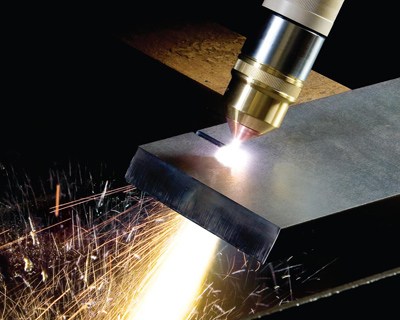As alternatives to shear cutting, have been recently developed different cutting techniques. These new techniques exploit both forms of energy that have never been considered before, like laser technique, together with already known form of energy treated in a new way.
The development of these new processing methods has undoubtedly been favoured not only by technological evolution, but also by the ever-increasing use of ceramic materials, sintered materials, special alloys, composite materials and high-performance polymers.
The most used forms of energy are mainly thermal energy known as oxycutting, electrical energy known as plasma and laser and mechanical energy (erosive action of water jets containing, in some cases, abrasive particles). The latter technique will be described separately in a subsequent article that will be published in the coming days on our industrial blog. Now let’s focus on oxygen cutting and plasma cutting techniques.
Oxygen cutting
The oxygen-cutting is the oldest alternative technique to shearing cutting. This technique uses the heat of a flame produced by a mixture of oxygen and acetylene by means of a torch which is quite similar to the one used for oxyacetylene welding. The torch has a tip with a central nozzle through which oxygen escapes and concentric holes through which acetylene escapes.
Oxygen cutting is used especially for cutting common steels, even thick steels. The torch can be used manually or mounted on a cnc controlled pantographs.
When we talk about “pantograph” we mean a two-dimensional or three-dimensional device used as a support to an instrument for drawing, cutting or measuring; it usually consists of a portal that can move along two tracks.
Plasma Cutting
Plasma cutting technique uses a jet of gas (usually a mixture of hydrogen and nitrogen) that, sent in a torch (it is an equipment that allows you to obtain and direct the ionised gas or plasma) is ionized by means of a high temperature produced by an electric arc or by the action of a high-frequency inductor.
The most important characteristics of this technique consist in being a very versatile system. It can be used for various types of materials, including non-ferrous metals. Moreover, this technique does not produce overheating of the material therefore plasma cutting avoids material deformations. As last, plasma cutting, is fast and accurate. Modern plasma cutting systems are managed by controls that use specific programs. Normally these devices are mounted on horizontal benches equipped with pantographs or also called plotters that support the cutting units known as torches.
If you are interested in purchasing a plasma or oxygen cutting machine, do not hesitate to have a look to the several machines offers available in our online catalogue in the category of sheet metal machines.
If you are interested in selling your used machine please feel free to contact us or to publish your ad free of charge on our website Makinate.com
